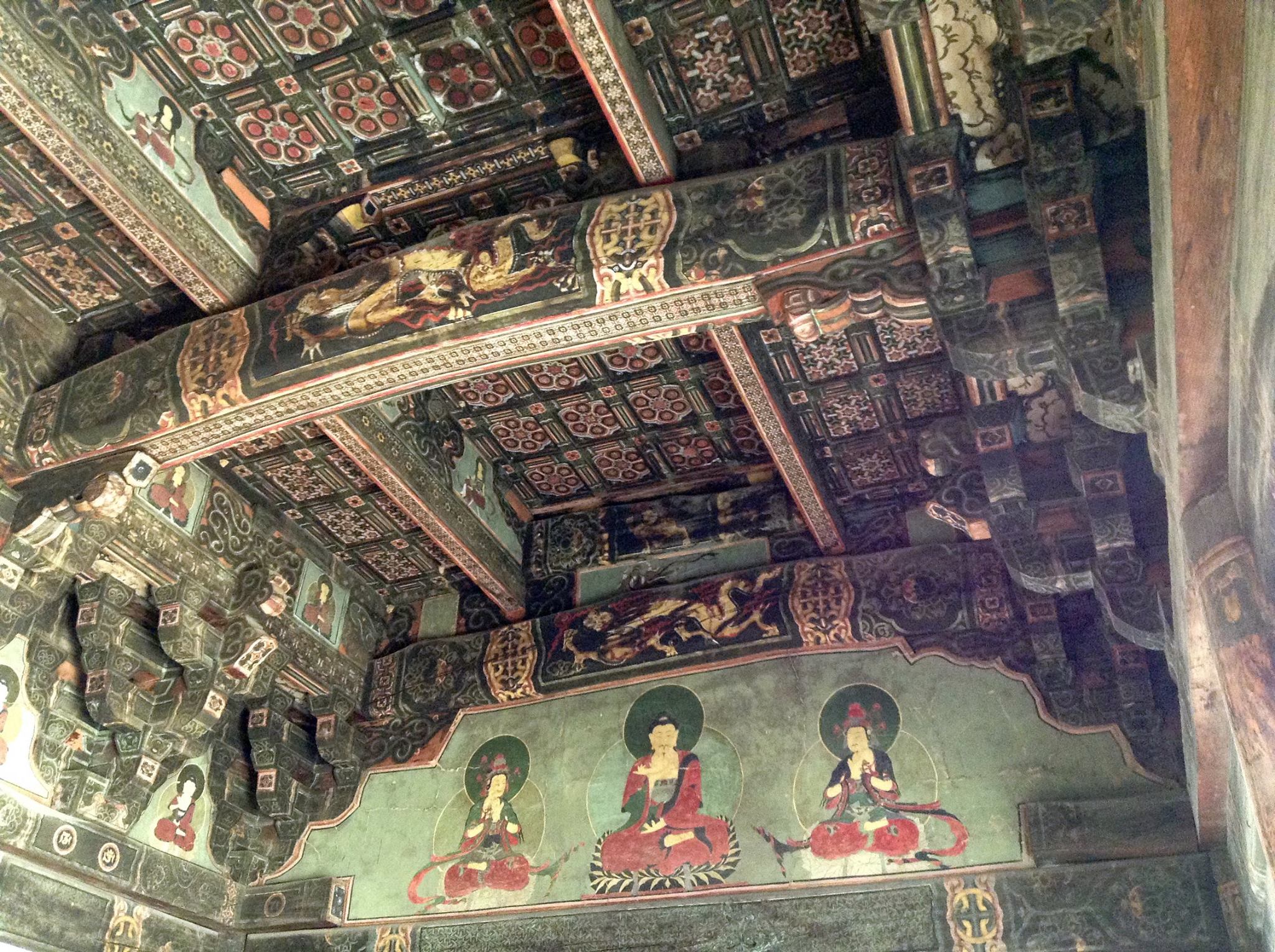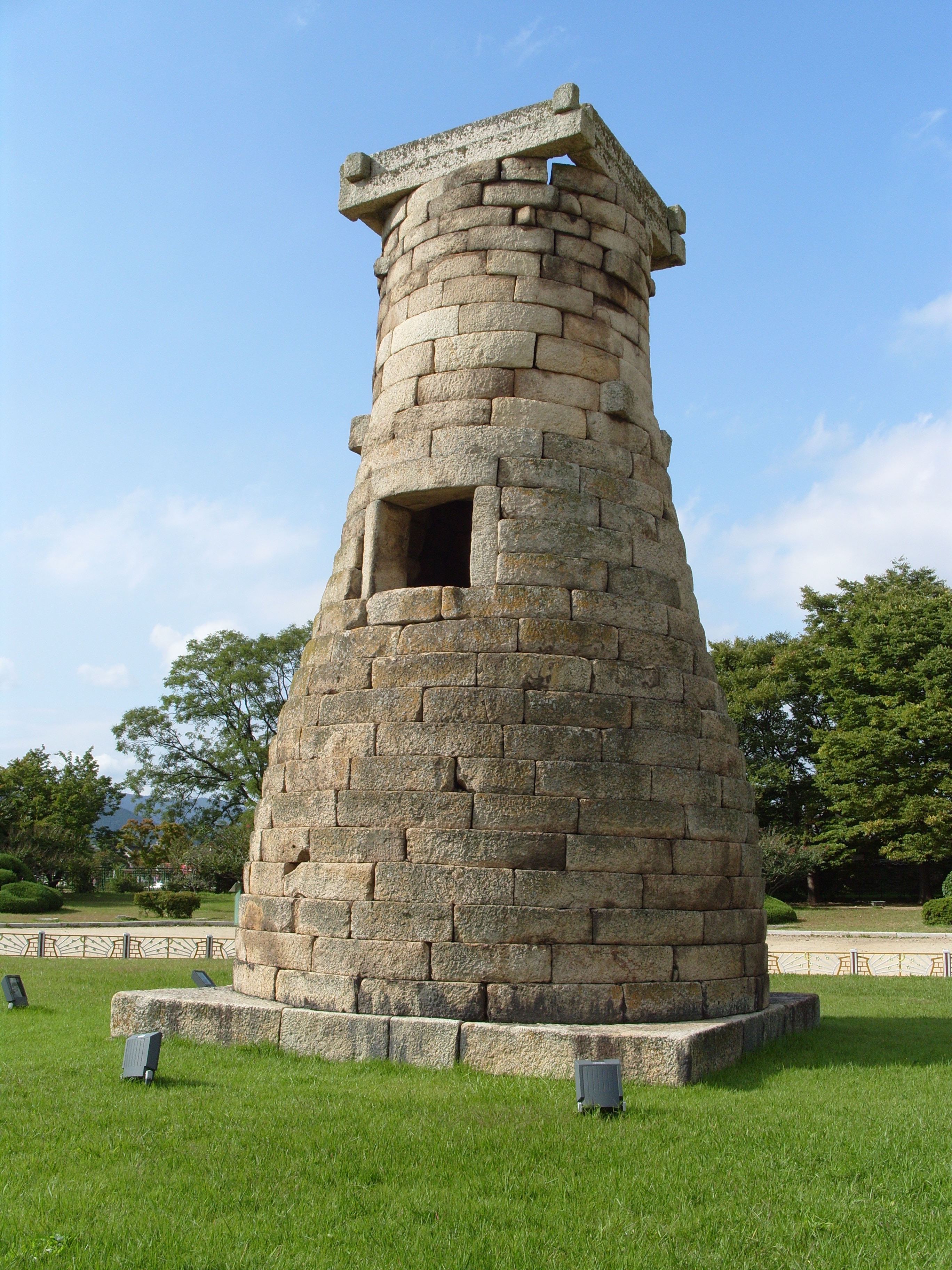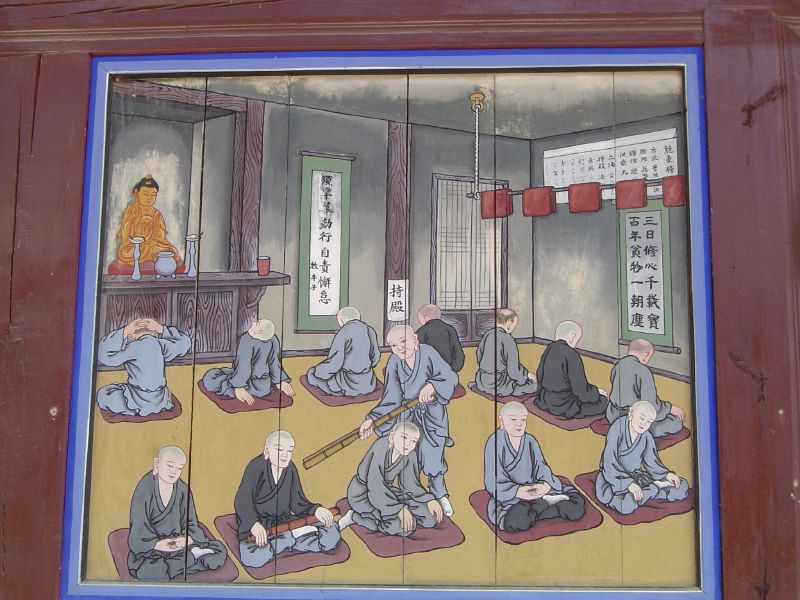|
Tongdosa
Tongdosa ()Le Bas, Tom :"South Korea" pg 244, Insight Guides, 8th edition 2007 is a head temple of the Jogye Order of Korean Buddhism and in the southern part of Mt. Chiseosan near Yangsan, South Gyeongsang Province, South Korea. Tongdosa is one of the Three Jewels Temples and represents Gautama Buddha. (Haeinsa, also in South Gyeongsang Province, represents the dharma or Buddhist teachings; and Songgwangsa in South Jeolla Province represents the sangha or Buddhist community.) Tongdosa is famous because there are no statues outside of the Buddha at the temple because the "real shrines of the Buddha" (relics) are preserved at Tongdosa. Courtyards at the temple are arrayed around several pagodas that house the Buddha's relics. Origins Tongdosa was established by the monk Jajang, Jajang-yulsa after returning from Tang dynasty, Tang China in 646 AD, during the reign of Queen Seondeok of Silla. It thrived throughout the Later Silla and Goryeo periods (918-1392), when Buddhism was t ... [...More Info...] [...Related Items...] OR: [Wikipedia] [Google] [Baidu] |
Jajang
Jajang (590–658) was a monk born Kim Seonjong, into the royal Kim family, in the kingdom of Silla. He is credited with founding the temple of Tongdosa in 646 CE, near in what is now Busan, South Korea, and played a significant role in the adoption of Buddhism as the national religion of Silla. His biography is told in the anthology of Korean Buddhism: "Jogye Culture Web", Vol 10. Gyeyul ( and Yul jong 律宗, or Vinaya in Sanskrit) monastic order, founded by Gyeyul, Gyeomik for the study and implementation of śīla (yuljang 律藏) the ''"moral discipline"'' or ''""Budhhist ethics"''), was lost after the decline of Baekje. After him, Jajang revived the Gyeyul order and built the Woljeongsa temple in 643 of Jogye Order of Korean Buddhism on the eastern slopes of Odaesan in today Pyeongchang County. Jajang was born in Silla as a bone-rank system, true bone (jin'gol) aristocrat. In 641 CE, Jajang and his disciple Seungsil traveled to Tang dynasty China where he received bon ... [...More Info...] [...Related Items...] OR: [Wikipedia] [Google] [Baidu] |
Three Jewels Temples
The Three Jewels Temples (삼보사찰, Sambosachal) are the three principal Buddhist temples in Korea, each representing one of the Three Jewels of Buddhism, and all located in South Korea. The three temples are: Tongdosa in South Gyeongsang Province represents the Buddha; Haeinsa, also in South Gyeongsang Province, represents the dharma or Buddhist teachings; and Songgwangsa in South Jeolla Province represents the sangha or Buddhist community. In most Korean Buddhist temples, the highest, most important, and often largest building is the Mahavira Hall--the central hall containing statues of the historical Buddha and other important figures. In the Three Jewel Temples, however, the most important buildings are ones that emphasize each temple's particular jewel. Thus, the main hall in Tongdosa opens out onto a stupa which the faithful claim contains relics of the Buddha; Haeinsa has two large buildings holding the ''Tripitaka Koreana''; and Songgwangsa has several prominent bu ... [...More Info...] [...Related Items...] OR: [Wikipedia] [Google] [Baidu] |
Queen Seondeok Of Silla
Queen Seondeok ( ; ? – ; day of the lunar month of the year of Inpyeong []) reigned as Queen Regnant of Silla, one of the Three Kingdoms of Korea, from 632 to 647. She was Silla's List of monarchs of Korea, twenty-seventh ruler, and its first reigning queen. She was the second female sovereign in recorded East Asian history and encouraged a renaissance in thought, literature, and the arts in Silla. In the '' Samguk sagi'', Queen Seondeok was described as "generous, benevolent, wise, and smart". According to the Legend of Jigwi, she was also beautiful. She developed Buddhist culture, selected great talent, and established diplomacy with the Tang dynasty, laying the foundation for the unification of the Three Kingdoms of Korea. Queen Seondeok is known as a wise and kind monarch, making her one of the most prominent monarchs in Korean history. Titles In texts, Queen Seondeok is indicated not only as ''Seondeok yeowang'' (), but also as ''Seondeok wang'' (), ''Seondeok y ... [...More Info...] [...Related Items...] OR: [Wikipedia] [Google] [Baidu] |
Songgwangsa
Songgwangsa (; translation: Spreading Pine Temple; alternates: Songgwang-sa, or Songgwang Sa, or Songkwangsa; also known as: Piney Expanse Monastery; originally: Gilsangsa), one of the three jewels of Seon Buddhism, is located in South Jeolla Province on Mount Jogye on the Korean Peninsula. Situated approximately away from the sea, it is within the Jogyesan Provincial Park. Founded in 867, it fell into disuse and was reestablished in 1190 by Seon master Jinul. Jinul's meditation teachings evolved from this monastery and contributed significantly to the Seon practice that prevails to this day in Korea. Songgwangsa is considered the "jewel" (''Samgharatna'') of the Korean monastic community. Though smaller in size, it is considered as the greatest among the trio of Three Jewels Temples representing “the Buddha, the dharma, and the sangha". The other two of the trio, Tongdosa and Haeinsa, are located in South Gyeongsang Province. This monastery, though under the jurisdictio ... [...More Info...] [...Related Items...] OR: [Wikipedia] [Google] [Baidu] |
Yangsan
Yangsan (; ) is a city in Gyeongsangnam-do Province, South Korea. It borders Ulsan to the northeast, Gijang-gun and Geumjeong District in Busan to the southeast, Gimhae to the southwest, and Miryang to the northwest. City Hall is located in Nambu-dong, Yangsan. Administrative divisions Currently, Yangsan is made up of 1 Eup (administrative division), 4 Myeon (administrative division) and 8 Dong. A city flag Yangsan means that it will open up as a future city with a bright, hopeful 21st century like magnolia, the flower of the city, and symbolizes Yangsan's strong will to build a first-class mass-production as the center of economy, society and culture in the eastern inland. Attractions *Tongdosa Temple () *Naewon Temple () *Yangsan Tower () * Yangsan Stadium () * Eden Valley Ski Resort () *Hongryong Falls *Yangsan Wondong Plum Blossom Festival * Imgyeong dae (임경대) * PyeongSan bookstroe (평산책방) Climate Yangsan has a humid subtropical climate (Köppen: ''Cwa'' ... [...More Info...] [...Related Items...] OR: [Wikipedia] [Google] [Baidu] |
Jogye Order
The Jogye Order, officially known as the Jogye Order of Korean Buddhism, (대한불교조계종, 大韓佛敎 曹溪宗), is the leading order of traditional Korean Buddhism, with roots dating back 1,200 years to the late Silla period. Around 820 CE, National Master Doui introduced Seon (Zen in the West) and the teachings of the Sixth Patriarch, Huineng, from China. The order's name, Jogye, originates from the village where Huineng's home temple, Nanhua Temple, is located.(). The Jogye Order rose to prominence in the late 11th century when the monk Jinul combined the direct practices of Korean Seon with the theological foundations of sutra-based Buddhist schools and Pure Land Buddhism. By 1994, the Jogye Order oversaw 1,725 temples, 10,056 clerics, and had 9,125,991 adherents. The international Kwan Um School of Zen, a Jogye school, was founded by Seon Master Seungsahn, the 78th Patriarch, who received dharma teachings from Seon Master Gobong. History The original "Ni ... [...More Info...] [...Related Items...] OR: [Wikipedia] [Google] [Baidu] |
South Gyeongsang Province
South Gyeongsang Province (, ) is a province in the southeast of South Korea. The provincial capital is at Changwon. It is adjacent to the major metropolitan center and port of Busan. The UNESCO World Heritage Site Haeinsa, a Buddhist temple that houses the '' Tripitaka Koreana'' and tourist attraction, is located in this province. Automobile and petrochemical factories are largely concentrated along the southern part of the province, extending from Ulsan through Busan, Changwon, and Jinju. Etymology The name derives ; . The name derives from the names of the principal cities of Gyeongju () and Sangju (). History Joseon In 1407, for military purposes, the administrative districts were reorganized, with Gyeongsang-do being divided into Gyeongsangjwa-do (or Gyeongsangjwa Province; left) and Gyeongsangwu-do (or Gyeongsangwu Province; right) as the reference points of the Nakdonggang River. Before 1895, the area corresponding to modern-day South Gyeongsang Province was part of ... [...More Info...] [...Related Items...] OR: [Wikipedia] [Google] [Baidu] |
Goryeo
Goryeo (; ) was a Korean state founded in 918, during a time of national division called the Later Three Kingdoms period, that unified and ruled the Korea, Korean Peninsula until the establishment of Joseon in 1392. Goryeo achieved what has been called a "true national unification" by Korean historians as it not only unified the Later Three Kingdoms but also incorporated much of the ruling class of the northern kingdom of Balhae, who had origins in Goguryeo of the earlier Three Kingdoms of Korea. According to Korean historians, it was during the Goryeo period that the individual identities of Goguryeo, Baekje and Silla were successfully merged into a single entity that became the basis of the modern-day Koreans, Korean identity. The name "Korea" is derived from the name of Goryeo, also romanized as Koryŏ, which was first used in the early 5th century by Goguryeo; Goryeo was a successor state to Later Goguryeo and Goguryeo. Throughout its existence, Goryeo, alongside Unified S ... [...More Info...] [...Related Items...] OR: [Wikipedia] [Google] [Baidu] |
Cliff
In geography and geology, a cliff or rock face is an area of Rock (geology), rock which has a general angle defined by the vertical, or nearly vertical. Cliffs are formed by the processes of weathering and erosion, with the effect of gravity. Cliffs are common on coasts, in mountainous areas, escarpments and along rivers. Cliffs are usually composed of rock that is resistant to weathering and erosion. The sedimentary rocks that are most likely to form cliffs include sandstone, limestone, chalk, and Dolomite (rock), dolomite. Igneous rocks such as granite and basalt also often form cliffs. An escarpment (or scarp) is a type of cliff formed by the movement of a geologic fault, a landslide, or sometimes by rock slides or falling rocks which change the differential erosion of the rock layers. Most cliffs have some form of scree slope at their base. In arid areas or under high cliffs, they are generally exposed jumbles of fallen rock. In areas of higher moisture, a soil slope may ... [...More Info...] [...Related Items...] OR: [Wikipedia] [Google] [Baidu] |
Chinese Characters
Chinese characters are logographs used Written Chinese, to write the Chinese languages and others from regions historically influenced by Chinese culture. Of the four independently invented writing systems accepted by scholars, they represent the only one that has remained in continuous use. Over a documented history spanning more than three millennia, the function, style, and means of writing characters have changed greatly. Unlike letters in alphabets that reflect the sounds of speech, Chinese characters generally represent morphemes, the units of meaning in a language. Writing all of the frequently used vocabulary in a language requires roughly 2000–3000 characters; , nearly have been identified and included in ''The Unicode Standard''. Characters are created according to several principles, where aspects of shape and pronunciation may be used to indicate the character's meaning. The first attested characters are oracle bone inscriptions made during the 13th century&n ... [...More Info...] [...Related Items...] OR: [Wikipedia] [Google] [Baidu] |
Dragon
A dragon is a Magic (supernatural), magical legendary creature that appears in the folklore of multiple cultures worldwide. Beliefs about dragons vary considerably through regions, but European dragon, dragons in Western cultures since the High Middle Ages have often been depicted as winged, horned, and capable of breathing fire. Chinese dragon, Dragons in eastern cultures are usually depicted as wingless, four-legged, Snake, serpentine creatures with above-average intelligence. Commonalities between dragons' traits are often a hybridization of Reptile, reptilian, mammalian, and Bird, avian features. Etymology The word ''dragon'' entered the English language in the early 13th century from Old French , which, in turn, comes from Latin (genitive ), meaning "huge serpent, dragon", from , (genitive , ) "serpent". [...More Info...] [...Related Items...] OR: [Wikipedia] [Google] [Baidu] |
Japanese Invasions Of Korea (1592–98)
The Imjin War () was a series of two Japanese invasions of Korea: an initial invasion in 1592 also individually called the "Imjin War", a brief truce in 1596, and a second invasion in 1597 called the Chŏngyu War (). The conflict ended in 1598 with the withdrawal of Japanese forces from the Korean Peninsula after a military stalemate in Korea's southern provinces. The invasions were launched by Toyotomi Hideyoshi with the intent of conquering the Korean Peninsula and China proper, which were ruled by the Joseon and Ming dynasties, respectively. Japan quickly succeeded in occupying large portions of the Korean Peninsula, but the contribution of reinforcements by the Ming, "(Korean) war minister Yi Hang-bok pointed out that assistance from China was the only way Korea could survive." as well as the disruption of Japanese supply fleets along the western and southern coasts by the Joseon Navy, "His naval victories were to prove decisive in the Japanese defeat, although Yi was to ... [...More Info...] [...Related Items...] OR: [Wikipedia] [Google] [Baidu] |







